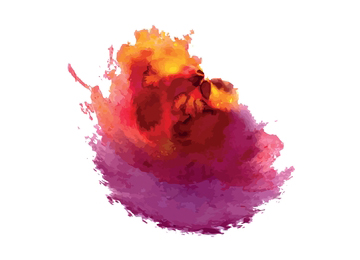
Blog
Walking on
Water: Linking
Faith and Art
By: Maria Fee
“But unless we are creators, we are not fully alive.”
In his poem Seven Stanzas at Easter John Updike contends that our resurrected God is not some ethereal being. Jesus, who is both man and God, bridges earth and heaven. Updike insists that if Jesus’ “cell’s dissolution did not reverse, the molecules/ reknit, the amino acids rekindle,/ the Church will fall.” Madeleine L’Engle in Walking on Water: Reflections on Faith and Art also magnifies Jesus’ physicality and how his humanity not only deepens the relationship we have with the divine, but also links us to this world, Jesus’ humanity makes us more human. The author’s musings form a collection of stories, quotes, and personal narratives that articulate a Christian faith informed by an incarnate God. While our faith sometimes tends to downgrade the earthly, L’Engle illuminates how the cross makes the ignoble loved for “God was pleased to reconcile to himself all things, whether on earth or in heaven” (Col. 1:20).
Walking on Water is written with the assumption that through Christ’s work of reconciliation art-making now becomes a Christian activity. Whatever we read, see, and experience Christ is present. For L’Engle, “To be Christian means to see Christ everywhere, to know him as all in all.” (p. 32) If Jesus is truly our “all in all” he is found in the stuff of ordinary living, in the small stories that evolve throughout the day. The work of an artist is to discoverer God’s grace and reveal the inventory of his reconciling work in the world. Through the incarnation Christ entered commonplace situations, mundane chores, work, and culture. Ultimately for L’Engle “one of the deepest messages of the Incarnation” is that “there is nothing so secular that it cannot be sacred.” (p. 50)
Living an incarnational life closes the gap between the religious and the secular life. Christ has made all ground holy. Indeed, L’Engle proclaims “there can be no categories such as ‘religious’ art and ‘secular’ art because all true art is incarnational, and therefore ‘religious.’” (p. 25) Everything can now become fodder towards our spiritual formation. Through Christ all things hold the capacity to enlarge our view of God, the world, and ourselves.
Walking on Water also presents the many parallels found between art and Christianity. To be an artist, and to be a Christian, one must become a servant. We work by faith and live a prayerful life. L’Engle sees the artist’s life as one of listening and obeying. An artist is “a servant who is willing to be a birthgiver.” Using Mary as a model of obedience she writes, “I believe that each work of art, whether it is a work of great genius, or something very small, comes to the artist and says, ‘Here I am. Enflesh me. Give birth to me’.” (p. 15) The artist is about the business of making God present.
Like Christianity, creating is a faith act. L’Engle writes, “Sometimes when we listen, we are led into places we do not expect, into adventures we do not understand”. (p. 22) By faith the artist seeks understanding through the creative process while simultaneously permitting mystery and ambiguity to play a part. Faith may work beyond our reasoning power, but does not fully stray from it. As artists we can trust in the “feeling of rightness, of knowing, knowing things which we are not yet able to understand.” (p. 23) When we trust in this intuition, or the voice of the artwork, we allow God to add a greater depth to what we create. By possessing faith in God through the making we allow his beauty to rest upon us hoping with the hymnist that others “may forget the channel, seeing only Him.”
Seen in this intuitive manner art becomes prayerful. Like prayer art does not discard the intellect. Nor does it solely rely on feelings. L’Engle reminds us, “In prayer, in the creative process, these two parts of ourselves, the mind and the heart, the intellectual and the intuitive, the conscious and the subconscious mind, stop fighting each other and collaborate.” (p. 162) When we are engaged with the arts we utilize all of our being; we become more fully human. The false dichotomy between spirit and matter ends.
L’Engle also expresses how the arts bring us into kairos time– God’s time. Kairos time can be thought of as those indescribable occurrences where God seems to be working overtime, including those moments when we experience great art. When we are totally drawn into a choral performance, or lose ourselves in creative play, we are ambushed by the marvelous, surprised by how unselfconscious the experience is. “Non-linear space/time is more easily understood by poets and saints than by reasonable folk,” argues L’Engle. (p. 87) This is because most artists are aware that they do not work alone. As a Christian and a writer L’Engle recognizes the collaborative nature between God and the artist. Furthermore, the action of creating allows for kairos time.
Again, from Updike:
The stone is rolled back, not paper-mache,
not a stone in a story,
but the vast rock of materiality that in the slow
grinding of time will eclipse for each of us
the wide light of day.
